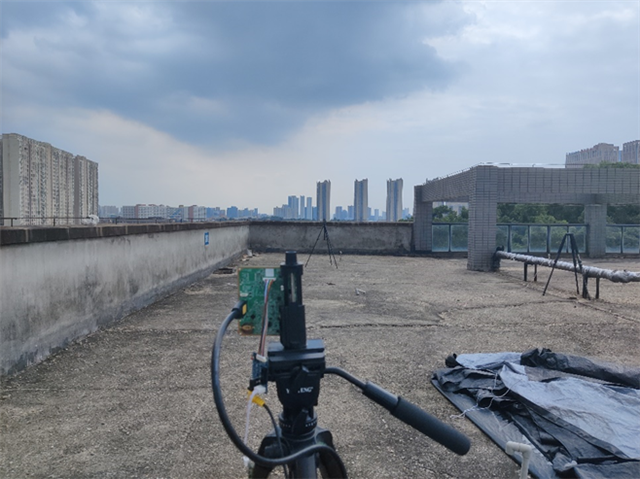Other Parts Discussed in Thread: AWR2944
Tool/software:
1. Measurement using 2243, without using corner reflectors
1.1 Problem Description
When monitoring the phase of stationary targets (both strong and weak targets) using radar, while both the radar and the target remain stationary and the distance is relatively far, the target phase is theoretically expected to remain constant, with only minor fluctuations if any. However, in practice, during long-term monitoring, the target phase shows slow variations, with fluctuations of approximately 150 degrees over an hour. The detailed situation is described below.
1.2 Scenario
The radar is used to monitor the phase of a stationary building, with the radar itself also fixed and stationary. The highest energy peak point is selected, and the time per frame is 40ms. The total monitoring time is 1 hour, and the phase change is shown in the figure below.

The phase of a stationary building was monitored using radar, which was also fixed in place. The highest energy peak point was selected, with each frame having a duration of 40ms. The monitoring lasted for a total of 1 hour, and the phase variation is shown in the figure below.
Target①:The right image shows the phase variation of the target, with the horizontal axis representing the frame number and the vertical axis representing the phase.


Target②:The right image shows the phase variation of the target, with the horizontal axis representing the frame number and the vertical axis representing the phase.


2. Measurement Using 2944 with Corner Reflector
2.1 Problem Description
In this section, the 2944 radar was used for measurement. The radar was configured for one transmit and four receive antennas. The target was placed 15 meters away, and measurements were taken for about half an hour. A corner reflector was placed at the target position, and periodic phase shifts were observed, though the shifts were smaller compared to the previous setup. Over a five-minute period, the maximum phase difference was 0.35, excluding obvious jitter.
The smaller phase shift is attributed to the use of the corner reflector.
2.2 Scenario
Target ①: The right-hand figure shows the phase variation over time. The vertical axis represents the phase, and the horizontal axis represents time (in minutes).



